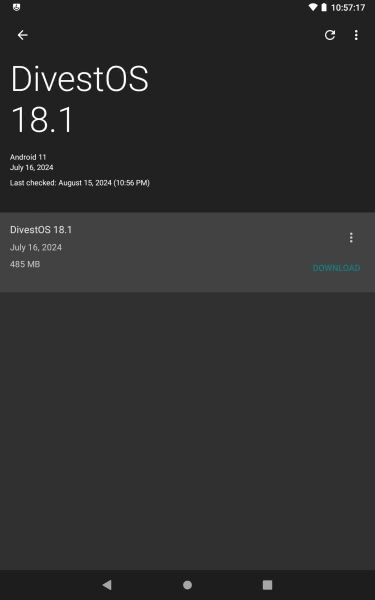Simple Mobile Tools is a suite of free and open source android apps designed to replace Google’s default apps. However, “free and open source” will likely be a thing of the past after Simple Mobile Tools was acquired by ZippoApps. I used a few Simple Mobile apps back when I wrote a review of F-Droid apps in 2021, but I was fortunately not using any at the time of the ZippoApps news. One of the main contributors to Simple Mobile Tools who was not involved in the decision to sell the suite to an adware company forked the project. The fork looks like a good option for people who want to keep using the Simple Mobile Tools suite. Since I was not using any of the apps, I thought I would note what I use instead. Before continuing, do note that my phone runs LineageOS and I do not use any closed source apps, so your mileage with my set-up may vary if you use a flavor of stock Android.
(Note: If you installed the apps from F-Droid, they will likely just stop receiving updates. If you installed from Google Play, I would strongly recommend looking for alternatives before ZippoApps provides undesired updates, provided you do not desire updates from ZippoApps.
See the suite frozen as of December 6, 2023.
- Simple Launcher: I use Kiss Launcher because I like that it is search-focused and stays out of the way. However, there are many open source alternatives.
- Simple Keyboard: I use different open source keyboard also called Simple Keyboard. The Simple Keyboard I use may be too simple for some use cases, but I like my touchscreen keyboard to be as simple as possible (because I want a physical keyboard).
- Simple Flashlight: I use the LineageOS default flashlight. “I need to install a flashlight app” is not a thought that ever crossed my mind.
- Simple Calculator: I have the LineageOS default calculator app and I am fairly sure I never used it. There are some fun open source calculators on F-Droid for those who are interested.
- Simple Camera: I started using the improved default LineageOS camera with LineageOS 20. For those who need something different, I have had good experiences with Open Camera.
- Simple Voice Recorder: I have the default voice recorder installed and have never used it.
- Simple Gallery Pro: I used to use Simple Gallery but I now use the LineageOS default. For whatever it is worth, I usually manage my phone’s camera folders from my computer since they are synced with Syncthing.
- Simple SMS Messenger: I use LineageOS’s default messenger. I previously used QKSMS which is good, although not updated frequently these days.
- Simple Calendar Pro: I have Etar installed but I do not use it.
- Simple File Manager Pro: I use Material Files and Ghost Commander, both of which I recommend.
- Simple Dialer: I use the LineageOS default phone app. However, because I almost never talk on the phone, this app is only used on rare occasions.
- Simple Draw Pro: I cannot draw on paper, much less on a touchscreen. However, I have seen an open source app called Linwood Butterfly which seems to receive frequent updates for those who are looking for a new drawing app.
- Simple Clock: You will be shocked to know that I stick with the LineageOS default clock app.
- Simple Notes Pro: Use Markor and be happy. Markor is a powerful text editor, but I use it most often for saving links in markdown files that I can then sync across all of my devices with Syncthing.
- Simple Music Player: I have the LineageOS default music app. This is not because I like it, but rather because I have never used a music app on my phone.
There you have it. I fear my suggestions may not be helpful to everyone because of my particular phone set-up and usage, but I hope that the suggestions I was able to offer help point some disappointed Simple Mobile Tools users who are not following the new fork in the right direction. I conclude by offering one non-Simple Mobile Tools suggestion: Take a look at Obtainium for installing open source apps directly from source if you do not source your apps from Google Play Store. I have been using it for a few months and am impressed thus far.

